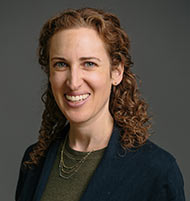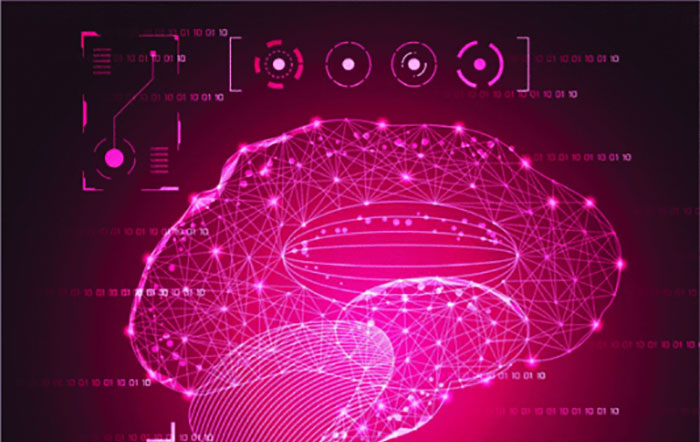- Our Story
- Publications & Resources
- Publications & Resources
- Publications
- IEEE Signal Processing Magazine
- IEEE Journal of Selected Topics in Signal Processing
- IEEE Signal Processing Letters
- IEEE Transactions on Computational Imaging
- IEEE Transactions on Image Processing
- IEEE Transactions on Information Forensics and Security
- IEEE Transactions on Multimedia
- IEEE Transactions on Signal and Information Processing over Networks
- IEEE Transactions on Signal Processing
- IEEE TCI
- IEEE TSIPN
- Data & Challenges
- Submit Manuscript
- Guidelines
- Information for Authors
- Special Issue Deadlines
- Overview Articles
- Top Accessed Articles
- SPS Newsletter
- SigPort
- SPS Resource Center
- Publications FAQ
- Blog
- News
- Dataset Papers
- Conferences & Events
- Community & Involvement
- Professional Development
- For Volunteers
- Information for Authors-OJSP
-
Home
Conferences Events IEEE Signal Processing Magazine IEEE SPL Article IEEE TIFS Article IEEE TMM Article IEEE TSP Article Jobs in Signal Processing Lectures Machine Learning Seasonal Schools Signal Processing News SPM Article SPS Distinguished Lectures SPS Newsletter Article SPS Webinar SPS Webinars SPS Webinar Series Webinar webinars
-
Our Story
What is Signal Processing?

The technology we use, and even rely on, in our everyday lives –computers, radios, video, cell phones – is enabled by signal processing. Learn More » -
Publications & Resources
-
SPS Resources
- Signal Processing Magazine The premier publication of the society.
- SPS Newsletter Monthly updates in Signal Processing
- SPS Resource Center Online library of tutorials, lectures, and presentations.
- SigPort Online repository for reports, papers, and more.
- SPS Feed The latest news, events, and more from the world of Signal Processing.
-
SPS Resources
-
Conferences & Events
-
Community & Involvement
-
Membership
- Join SPS The IEEE Signal Processing Magazine, Conference, Discounts, Awards, Collaborations, and more!
- Chapter Locator Find your local chapter and connect with fellow industry professionals, academics and students
- Women in Signal Processing Networking and engagement opportunities for women across signal processing disciplines
- Students Scholarships, conference discounts, travel grants, SP Cup, VIP Cup, 5-MICC
- Young Professionals Career development opportunities, networking
- Get Involved
-
Technical Committees
- Applied Signal Processing Systems
- Audio and Acoustic Signal Processing
- Bio Imaging and Signal Processing
- Computational Imaging
- Image Video and Multidimensional Signal Processing
- Information Forensics and Security
- Machine Learning for Signal Processing
- Multimedia Signal Processing
- Sensor Array and Multichannel
- Signal Processing for Communication and Networking
- Signal Processing Theory and Methods
- Speech and Language Processing
- Technical Working Groups
- More TC Resources
-
Membership
-
Professional Development
-
Professional Development
- Signal Processing Mentorship Academy (SigMA) Program
- Micro Mentoring Experience Program (MiME)
- Distinguished Lecturer Program
- Distinguished Lecturers
- Distinguished Lecturer Nominations
- Past Lecturers
- Distinguished Industry Speaker Program
- Distinguished Industry Speakers
- Distinguished Industry Speaker Nominations
- Industry Resources
- IEEE Training Materials
- Jobs in Signal Processing: IEEE Job Site
-
Career Resources
- SPS Education Program Educational content in signal processing and related fields.
- Distinguished Lecturer Program Chapters have access to educators and authors in the fields of Signal Processing
- Job Opportunities Signal Processing and Technical Committee specific job opportunities
- Job Submission Form Employers may submit opportunities in the area of Signal Processing.
-
Professional Development
-
For Volunteers
-
For Board & Committee Members
- Board Agenda/Minutes* Agendas, minutes and supporting documentation for Board and Committee Members
- SPS Directory* Directory of volunteers, society and division directory for Board and Committee Members.
- Membership Development Reports* Insight into the Society’s month-over-month and year-over-year growths and declines for Board and Committee Members
-
For Board & Committee Members
Popular Pages
Today's:
- Information for Authors
- (ICME 2026) 2026 IEEE International Conference on Multimedia and Expo
- IEEE Transactions on Information Forensics and Security
- (ASRU 2025) 2025 IEEE Automatic Speech Recognition and Understanding Workshop
- Membership
- IEEE Transactions on Signal Processing
- IEEE Transactions on Multimedia
- Signal Processing Cup
- Information for Authors-SPL
- Submit a Manuscript
- IEEE Transactions on Image Processing
- IEEE Transactions on Audio, Speech and Language Processing
- IEEE Signal Processing Letters
- SPS Scholarship Program
- (ISBI 2026) 2026 IEEE 23rd International Symposium on Biomedical Imaging
All time:
- Information for Authors
- Submit a Manuscript
- IEEE Transactions on Image Processing
- IEEE Transactions on Information Forensics and Security
- IEEE Transactions on Multimedia
- IEEE Transactions on Audio, Speech and Language Processing
- IEEE Signal Processing Letters
- IEEE Transactions on Signal Processing
- Conferences & Events
- IEEE Journal of Selected Topics in Signal Processing
- Information for Authors-SPL
- Conference Call for Papers
- Signal Processing 101
- IEEE Signal Processing Magazine
- Guidelines
Last viewed:
- Guidelines for Reviewers
- Policies & Bylaws
- Conferences
- Signal Processing 101
- Conference Call for Papers - September 2010
- A Survey on Smart Homes for Aging in Place: Toward Solutions to the Specific Needs of the Elderly
- Award Recipients
- Signal Processing Cup
- IEEE Journal of Selected Topics in Signal Processing
- Submit Your Proposals for 2026 Member Driven Initiatives
- Conferences & Workshops
- Access Restricted
- Past Members
- Affiliates
- Login Error
Industry Leaders in Signal Processing and Machine Learning: Dr. Meredith Ringel Morris
You are here
Newsletter Menu
Newsletter Categories
Top Reasons to Join SPS Today!
1. IEEE Signal Processing Magazine
2. Signal Processing Digital Library*
3. Inside Signal Processing Newsletter
4. SPS Resource Center
5. Career advancement & recognition
6. Discounts on conferences and publications
7. Professional networking
8. Communities for students, young professionals, and women
9. Volunteer opportunities
10. Coming soon! PDH/CEU credits
Click here to learn more.
News and Resources for Members of the IEEE Signal Processing Society
Industry Leaders in Signal Processing and Machine Learning: Dr. Meredith Ringel Morris
 Dr. Meredith Ringel Morris is Director of People + AI Research at Google. Prior to joining Google Research, Dr. Morris was Research Area Manager for Interaction, Accessibility, and Mixed Reality at Microsoft Research, where she founded Microsoft’s Ability research group. She is also an Affiliate Professor at the University of Washington in the Allen School of Computer Science & Engineering and in The Information School. Her research on collaboration and social technologies has contributed new systems, methods, and insights to diverse areas of computing including gesture interaction, information retrieval, accessibility, and human-centered AI. Dr. Morris earned her Sc.B. in Computer Science from Brown University and her M.S. and Ph.D. in Computer Science from Stanford University. She is an ACM Fellow and a member of the ACM SIGCHI Academy.
Dr. Meredith Ringel Morris is Director of People + AI Research at Google. Prior to joining Google Research, Dr. Morris was Research Area Manager for Interaction, Accessibility, and Mixed Reality at Microsoft Research, where she founded Microsoft’s Ability research group. She is also an Affiliate Professor at the University of Washington in the Allen School of Computer Science & Engineering and in The Information School. Her research on collaboration and social technologies has contributed new systems, methods, and insights to diverse areas of computing including gesture interaction, information retrieval, accessibility, and human-centered AI. Dr. Morris earned her Sc.B. in Computer Science from Brown University and her M.S. and Ph.D. in Computer Science from Stanford University. She is an ACM Fellow and a member of the ACM SIGCHI Academy.
We approached Meredith Ringel Morris with a few questions:
1. What challenges have you had to face to get to where you are today?
Not having the knowledge that computer science existed as a discipline my high school didn’t offer computer programming courses. The only computer course I could take was one that taught touch-typing skills, though that was quite useful–I can touch-type over 100 WPM. I was fortunate to be selected to attend the Pennsylvania Governor’s School for the Sciences (PGSS) the summer before my senior year; this was a program at Carnegie Mellon University that allowed local students interested in STEM to do college-level coursework over the summer at no cost, and this was where I first learned about computer programming. If I had not tried programming at PGSS, I would never have thought to study computer science in college.
A challenge that I continue to experience is sub-discipline bias regarding Human-Computer Interaction (HCI) as a field within computing. Hopefully, I think there is a growing awareness that ensuring that computing systems are usable by and useful to a broad range of people is a critical area of computing research. For instance, there is a growing interest in human-centered AI, which brings methods from HCI to bear on AI technologies, including technical methods (e.g., for designing novel human-AI interactions and increasing transparency via Explainable AI techniques) and socio-technical methods (e.g., for understanding the impacts of AI and associated ethics and fairness considerations).
2. What was the most important factor in your success?
Having great mentors has been an important factor. My undergraduate mentor Andy van Dam, my graduate advisor Terry Winograd, and my mentors at Microsoft–Eric Horvitz and Susan Dumais–were all critical to my success and growth as a researcher.
Also, having great colleagues has also been important. I’m using “I” pronouns instead of “we” pronouns since this is an interview, but all of the research I’m discussing has been a team effort. I have been so fortunate to be able to collaborate with my colleagues on the PAIR team at Google Research, on the Ability team at Microsoft Research, and the more than 50 graduate students I’ve mentored at those companies and at the University of Washington over the past 16 years.
3. How does your work affect society?
At Google, I lead the People + AI Research team (PAIR). PAIR’s mission is to conduct human-centered research and design to make people + AI partnerships productive, enjoyable, and fair. PAIR’s foundational research and engineering efforts are a key part of Google’s Responsible AI effort. We release a variety of public materials and open-source projects to support AI practitioners and researchers. For example, the People + AI Guidebook provides a set of methods and best practices for designing with AI, including case studies and workshop materials; the Know Your Data tool supports understanding large scale datasets, which can help improve data quality and mitigate fairness and bias challenges; and the Language Interpretability Tool supports understanding of NLP models through interactive visualization techniques.
Prior to joining Google Research, I founded the Ability Team at Microsoft Research. The Ability Team conducts user-centered research to advance the state of the art in accessible technologies that empower people with long-term, temporary, or situational disabilities. For instance, my research at Microsoft included exploring how to make Mixed Reality accessible to people with varied levels of vision, hearing, and/or mobility, as well as how to improve the quality of automatically-generated image descriptions.
I’ve merged my interest in accessibility research with PAIR’s focus on human-AI partnerships by contributing to projects at Google on how language models like LaMDA can facilitate communication for people with dyslexia and for people with ALS who rely on augmentative and alternative communication technologies.
4. If there is one take home message you want the readers of this interview have what would it be?
My mantra is “Computer Science is people.” Yes, this is a spoof on the famous line from Soylent Green because I am, after all, a nerd. But seriously, back to my earlier remark about sub-discipline bias regarding HCI – I would argue that not only is HCI definitely computer science, but it is central to computer science – there is no purpose to creating faster, smaller, more secure, more powerful computing systems if they are not meeting the needs of end-users and aligning to our values as a society. And I believe that increasing the diversity of who is creating the next generation of computing technologies – including both disciplinary and demographic diversity – is critical for ensuring that all of the subfields within computing are making advances that address the right challenges.
5. Failures are an inevitable part of everyone’s career journey, what is the most important lesson you have learned during your career when dealing with failures?
One challenge for researchers can often be “calling” a failure, i.e. making that decision of when to sunset a project that isn’t working out and move on. I think this is a challenging skill to learn and something I still struggle with sometimes. As researchers we have a lot of passion for our work and become very attached to ideas. But “failing fast” is an important skill; it is wonderful that research careers allow us to take risks on novel ideas – if some of them weren’t failures, it would mean we weren’t being bold and risky enough.
6. Although novelty and innovation is the most important factor for technology advancement, when a researcher, scientist or engineer has a new idea there are a lot of push backs until they prove the new idea actually works. What is your advice on how to handle them? Especially for the readers who are in the early stages of their career.
I know that the paper review process can be particularly discouraging for early-career researchers, and sometimes it can be difficult to know when to take a critique to heart vs. when a reviewer is off-base in their assessment. My personal rule of thumb is that if a single person makes a comment, perhaps it is just a case of “Reviewer #2 Syndrome,” but if two people make a similar comment then it is time to revisit my assumptions about the work. I give more detailed advice about responding to critical reviews in my “rebuttal writing guide,” which I’ve heard that many students find helpful.
To learn more about Meredith Ringel Morris and for more information, visit the webpage.
Open Calls
| Nomination/Position | Deadline |
|---|---|
| Call for Nominations for the SPS Chapter of the Year Award | 15 October 2025 |
| Submit Your 2026 ICASSP Workshop Paper | 22 October 2025 |
| Call for Papers for 2026 LRAC Workshop | 22 October 2025 |
| Submit a Proposal for ICASSP 2030 | 31 October 2025 |
| Call for Project Proposals: IEEE SPS SigMA Program - Signal Processing Mentorship Academy | 2 November 2025 |
| Submit Your Proposals for 2026 Member Driven Initiatives | 21 November 2025 |
| IEEE Signal Processing Society Annual Election Opens on 17 October | 4 December 2025 |
Education & Resources
Society News
- Joint IEEE SPS and EURASIP Summer School on Defining 6G: Theory, Applications, and Enabling Technologies
- Congratulations to the 2022 SPS Certified Chapters
- Job Opportunities in Signal Processing
- Call for Editor-in-Chief Nominations: IEEE Transactions on Wireless Communications
- Nominate a Colleague! Nominations Open for 2022 SPS Awards
Technical Committee News
SPS Social Media
- IEEE SPS Facebook Page https://www.facebook.com/ieeeSPS
- IEEE SPS X Page https://x.com/IEEEsps
- IEEE SPS Instagram Page https://www.instagram.com/ieeesps/?hl=en
- IEEE SPS LinkedIn Page https://www.linkedin.com/company/ieeesps/
- IEEE SPS YouTube Channel https://www.youtube.com/ieeeSPS
Home | Sitemap | Contact | Accessibility | Nondiscrimination Policy | IEEE Ethics Reporting | IEEE Privacy Policy | Terms | Feedback
© Copyright 2025 IEEE - All rights reserved. Use of this website signifies your agreement to the IEEE Terms and Conditions.
A public charity, IEEE is the world's largest technical professional organization dedicated to advancing technology for the benefit of humanity.









